Appendix O: HL7 v3 Transmission and Trigger Event Control Act Wrappers
An HL7 Version 3 Interaction is composed of 2 parts:
- An "HL7 Transmission wrapper(s)" (always)
- The "HL7 Transmission Content" (optional)
O.1 HL7 V3 Transmission Wrappers
An "HL7 Transmission wrapper" includes information needed by a sending application or message handling service to package and route the V3 interaction to the designated receiving application(s) and/or message handling service(s). This wrapper also includes attributes that influence the message handling behavior of the receiving application that is consistent with the HL7 defined messaging interaction for which the interaction has been created.
Note: These wrappers loosely equate to the MSH, MSA, and ERR segments in HL7 v2.5.
All HL7 Version 3 interactions have an appropriately configured "HL7 Transmission wrapper".
The HL7 Transmission Wrapper exists in two different forms:
- The Message Transmission Wrapper. This wrapper contains zero or one instances of HL7 Transmission Content.
- The Batch Transmission Wrapper. This wrapper contains zero or more Message Transmission Wrappers. Each Message Transmission Wrapper contains zero or one instances of HL7 Transmission Content. The Batch wrapper is occasionally used to group Message Transmissions.
An interaction that has the Message Transmission Wrapper as its "outermost" wrapper is commonly referred to as a "message" or a "message-based interaction". An interaction that has the Batch Transmission Wrapper as its "outermost" wrapper is commonly referred to as a "batch" or a "batch-based interaction".
O.1.1 Send Message Payload Information Model (MCCI_RM000100IHE)
Below is the Message Information Model for this transmission wrapper. The purpose of the model is to describe the data elements relevant for use with IHE transactions based on HL7 V3 messages. It is a strict subset of the Send Message Payload (MCCI_RM000100UV01) RMIM, which can be found on the HL7 V3 2008 Edition CD at: Edition2008/domains/uvci/editable/MCCI_RM000100UV.htm
The following restrictions were made on the original RMIM to arrive at the restricted model:
- The following optional class attributes have been omitted:
- Message.profileId
- Message.responseCode
- Message.attachmentText
- Sender.telecom
- Receiver.telecom
- Device.desc
- Device.existenceTime
- The following optional classes have been omitted:
- AttentionLine
- RespondTo
- LocatedEntity
- scopedRole(Organization)
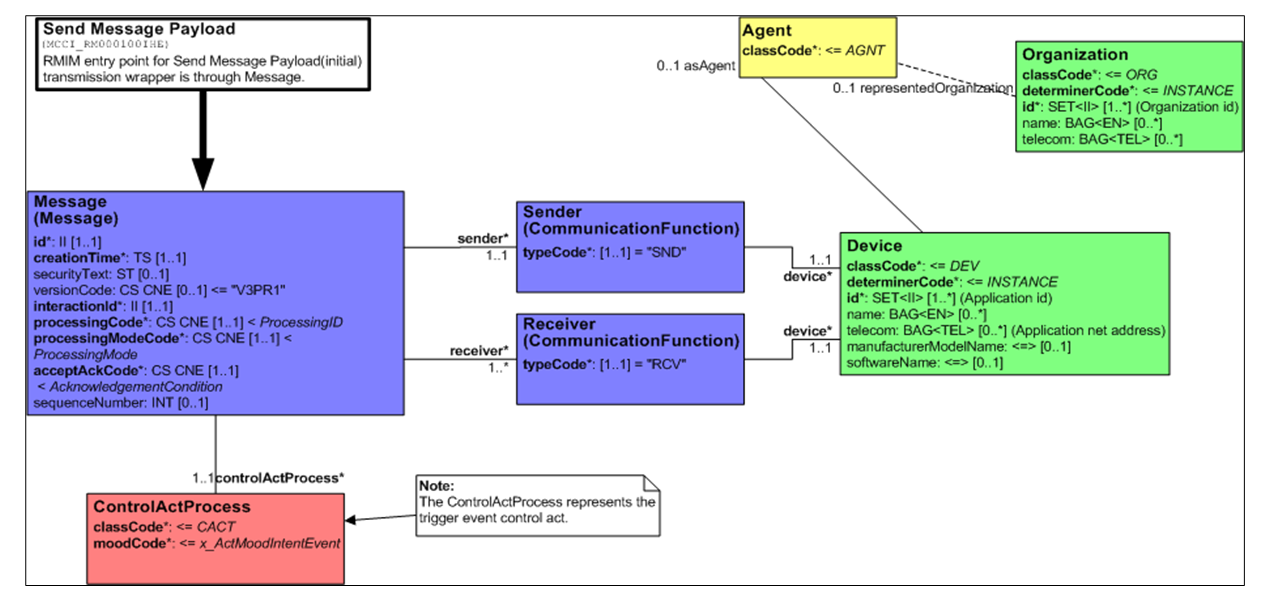
Figure O.1.1-1: Message Information Model
The attributes of this model are described in the following table.
Table O.1.1-1: Model Attributes
|
MCCI_HD000100IHE
|
This HMD extract defines the transmission wrapper used to send HL7 V3 Message Payload. Derived from Figure O.1.1-1 (MCCI_RM000100IHE) |
| Message | The transmission focal class. According of the XML ITS, the root XML element representing this class will be the HL7 interaction ID |
|
id [1..1] (M)
|
Unique message ID |
|
creationTime [1..1] (M)
|
Time stamp representing the time the message was created. Note that this is different from the time when the event which triggered the message occurred. |
|
versionCode [0..1]
|
The HL7 Version used in this message |
|
interactionId [1..1] (M)
|
The HL7 Interaction ID represented by this message |
|
processingCode [1..1] (M)
|
This attribute defines whether the message is part of a production, training, or debugging system. Valid values are D (Debugging), T (Testing), P (Production) |
|
processingModeCode [1..1] (M)
|
This attribute defines whether the message is being sent in current processing, archive mode, initial load mode, restore from archive mode, etc. Valid values are A (Archive), T (Current processing), I (Initial Load), R (Restore from archive) |
|
acceptAckCode [1..1] (M)
|
Acknowledgement Condition codes describe the conditions under which accept or application level acknowledgements are required to be returned in response to the message send operation. Valid values are AL (Always), ER (Error/reject only), NE (Never). |
|
sequenceNumber [0..1]
|
An optional sequence number. |
| Sender | |
|
typeCode [1..1] (M)
|
Structural attribute; this is a "Sender" communication function |
| Receiver | |
|
typeCode [1..1] (M)
|
Structural attribute; this is a "Receiver” communication function |
| Device | |
|
classCode [1..1] (M)
|
Structural attribute; this entity is a “Device” |
|
determinerCode [1..1] (M)
|
Structural attribute; this is a specific device |
|
id [1..*] (M)
|
The application ID(s). IHE restriction: id.root SHALL be an ISO OID, and id.extension SHALL NOT have a value. |
|
name [0..*]
|
Optional Sender or Receiver name |
|
telecom [0..*]
|
Optional network address of the application |
|
manufacturerModelName [0..1]
|
Optional application brand name |
|
softwareName [0..1]
|
Optional software name |
| Agent | This role links the application with the organization to which it belongs |
|
classCode [1..1] (M)
|
Structural attribute; this is the Agent role |
| Organization | The sender or receiver organization |
|
classCode [1..1] (M)
|
Structural attribute; this entity is an organization |
|
determinerCode [1..1] (M)
|
Structural attribute; this is a specific organization |
|
id [1..*] (M)
|
The organization ID(s). IHE restriction: id.root SHALL be an ISO OID, and id.extension SHALL NOT have a value. |
|
name [0..*]
|
Optional organization name |
|
telecom [0..*]
|
Optional telecommunications address |
| ControlActProcess | This is the stub where the focal class of the transmission content will be placed in the message. |
O.1.2 Send Accept Acknowledgement Information Model (MCCI_RM000200IHE)
Below is the Message Information Model for the accept acknowledgment. The purpose of the model is to describe the data elements relevant for use with IHE transactions based on HL7 V3 messages. It is a strict subset of the Send Accept Acknowledgement (MCCI_RM000200UV01) RMIM, which can be found on the HL7 V3 2008 Edition CD at: Edition2008/domains/uvci/editable/MCCI_RM000200UV.htm
The following restrictions were made on the original RMIM to arrive at the restricted model:
- The following optional class attributes have been omitted:
- Message.profileId
- Message.attachmentText
- Sender.telecom
- Receiver.telecom
- Device.desc
- Device.existenceTime
- Acknowledgement.messageWaitingNumber
- Acknowledgement.messageWaitingPriorityCode
- The following optional classes have been omitted:
- AttentionLine
- RespondTo
- LocatedEntity
- scopedRole(Organization)
- The following constraints have been applied:
- Message.acceptAckCode is fixed to NE (don't ack an ack)
- Acknowledgment is a required class
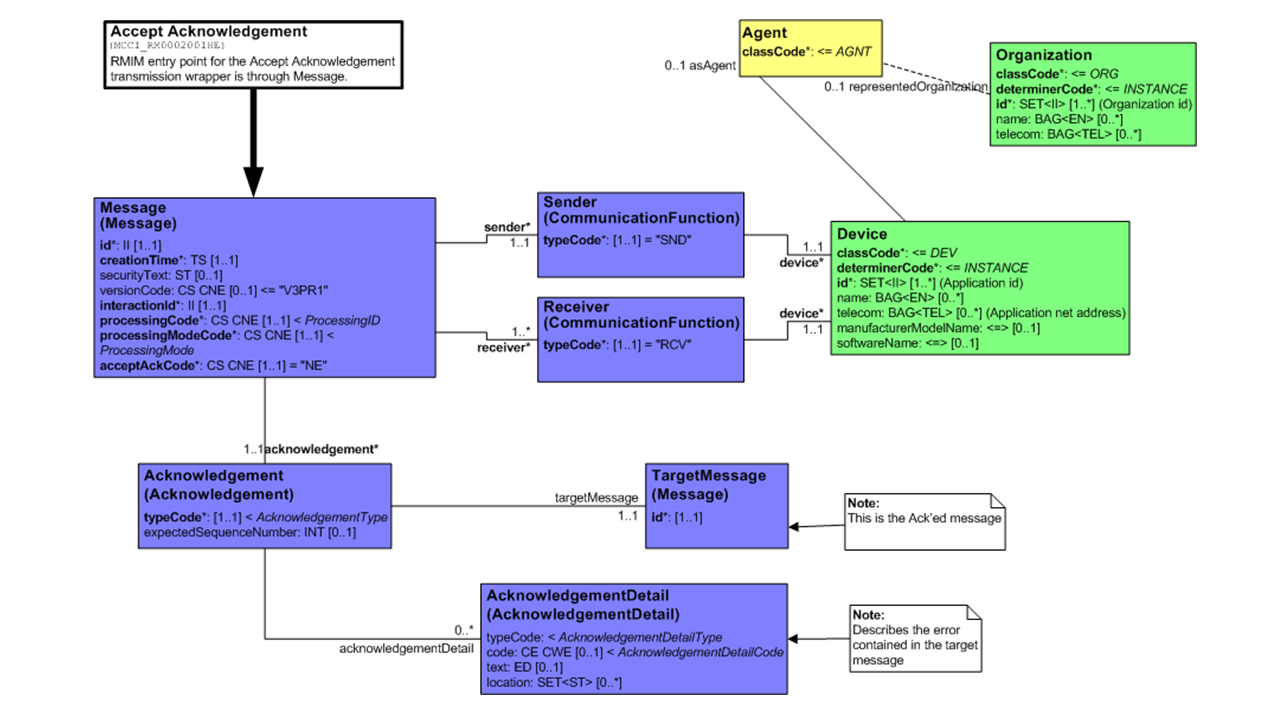
Figure O.1.2-1: Message Information Mode;
The attributes of this model are described in the following table:
Table O.1.2-1: Model Attributes
|
MCCI_HD000200IHE
|
This HMD extract defines the transmission wrapper used to send HL7 V3 Accept Acknowledgement. Derived from Figure O.1.2-1 (MCCI_RM000200IHE) |
| Message | The transmission focal class. According of the XML ITS, the root XML element representing this class will be the HL7 interaction ID |
|
id [1..1] (M)
|
Unique message ID of the acknowledgment |
|
creationTime [1..1] (M)
|
Time stamp representing the time the message was created. Note that this is different from the time when the event which triggered the message occurred. |
|
versionCode [0..1]
|
The HL7 Version used in this message |
|
interactionId [1..1] (M)
|
The HL7 Interaction ID represented by this message |
|
processingCode [1..1] (M)
|
This attribute defines whether the message is part of a production, training, or debugging system. Valid values are D (Debugging), T (Testing), P (Production) |
|
processingModeCode [1..1] (M)
|
This attribute defines whether the message is being sent in current processing, archive mode, initial load mode, restore from archive mode, etc. Valid values are A (Archive), T (Current processing), I (Initial Load), R (Restore from archive) |
|
acceptAckCode [1..1] (M)
|
Acknowledgement Condition codes describe the conditions under which accept or application level acknowledgements are required to be returned in response to the message send operation. Fixed to NE (Never) as this is an acknowledgment itself. |
| Sender | The sender is the one which is acknowledging the receipt of a message |
|
typeCode [1..1] (M)
|
Structural attribute; this is a "Sender" communication function |
| Receiver | The receiver in the one which sent the message being acknowledged |
|
typeCode [1..1] (M)
|
Structural attribute; this is a "Receiver” communication function |
| Device | |
|
classCode [1..1] (M)
|
Structural attribute; this entity is a “Device” |
|
determinerCode [1..1] (M)
|
Structural attribute; this is a specific device |
|
id [1..*] (M)
|
The application ID(s). IHE restriction: id.root SHALL be an ISO OID, and id.extension SHALL NOT have a value. |
|
name [0..*]
|
Optional Sender or Receiver name |
|
telecom [0..*]
|
Optional network address of the application |
|
manufacturerModelName [0..1]
|
Optional application brand name |
|
softwareName [0..1]
|
Optional software name |
| Agent | This role links the application with the organization to which it belongs |
|
classCode [1..1] (M)
|
Structural attribute; this is the Agent role |
| Organization | The sender or receiver organization |
|
classCode [1..1] (M)
|
Structural attribute; this entity is an organization |
|
determinerCode [1..1] (M)
|
Structural attribute; this is a specific organization |
|
id [1..*] (M)
|
The organization ID(s). IHE restriction: id.root SHALL be an ISO OID, and id.extension SHALL NOT have a value. |
|
name [0..*]
|
Optional organization name |
|
telecom [0..*]
|
Optional telecommunications address |
| Acknowledgement | |
|
typeCode [1..1] (M)
|
The acknowledgement type. Since this is an Accept Acknowledgement, the possible values are CA (Accept Acknowledgement Commit Accept), CE (Accept Acknowledgement Commit Error), or CR (Accept Acknowledgement Commit Reject). |
|
expectedSequenceNumber [0..1]
|
|
| TargetMessage | The message being acknowledged |
|
id [1..1] (M)
|
Unique message ID of the message being acknowledged |
| AcknowledgementDetail | Describes the error(s) contained in the target message |
|
typeCode [0..1]
|
Optional detail type indicating if the problem was an error (E), a warning (W), or informational (I). |
|
code [0..1]
|
An optional coded value, representing the acknowledgement detail being transmitted. |
|
text [0..1]
|
Optional description of the acknowledgement detail being transmitted |
|
location [0..*]
|
The location within the message where the problem occurred. It is recommended that this is represented via an XPath expression. |
The Accept Acknowledgement does not contain any additional content defined elsewhere. It will be transmitted using Web Services, according to the requirements specified in Appendix V.
The following WSDL naming conventions SHALL apply:
accept acknowledgment -> " MCCI_IN000002UV01 _Message"
The following WSDL snippet describes the type for this message:
…
<types>
<xsd:schema elementFormDefault="qualified" targetNamespace="urn:hl7-org:v3"
xmlns:hl7="urn:hl7-org:v3">
<!-- Include the message schema -->
<xsd:import namespace="urn:hl7-org:v3" schemaLocation="../schema/HL7V3/NE2008/multicacheschemas/MCCI_IN000002UV01.xsd"/>
<xsd:element name="MCCI_IN000002UV01"/>
</xsd:schema>
</types>
…
The message is described by the following snippet:
…
<message name="MCCI_IN000002UV01_Message">
<part element="hl7:MCCI_IN000002UV01" name="Body"/>
</message>
…
Various WSDL examples describing IHE transactions as web services are found in the transaction definitions in ITI TF-2, together with the expected actions of the actors which provide these services.
O.1.3 Send Application Acknowledgement Information Model (MCCI_RM000300IHE)
Below is the Message Information Model for the application acknowledgment. The purpose of the model is to describe the data elements relevant for use with IHE transactions based on HL7 V3 messages. It is a strict subset of the Send Application Acknowledgement (MCCI_RM000300UV01) RMIM, which can be found on the HL7 V3 2008 Edition CD at: Edition2008/domains/uvci/editable/MCCI_RM000300UV.htm
The following restrictions were made on the original RMIM to arrive at the restricted model:
- The following optional class attributes have been omitted:
- Message.profileId
- Message.attachmentText
- Sender.telecom
- Receiver.telecom
- Device.desc
- Device.existenceTime
- Acknowledgement.messageWaitingNumber
- Acknowledgement.messageWaitingPriorityCode
- The following optional classes have been omitted:
- AttentionLine
- RespondTo
- LocatedEntity
- scopedRole(Organization)
- The following constraints have been applied:
- Message.acceptAckCode is fixed to NE (don't ack an ack)
- Acknowledgment is a required class
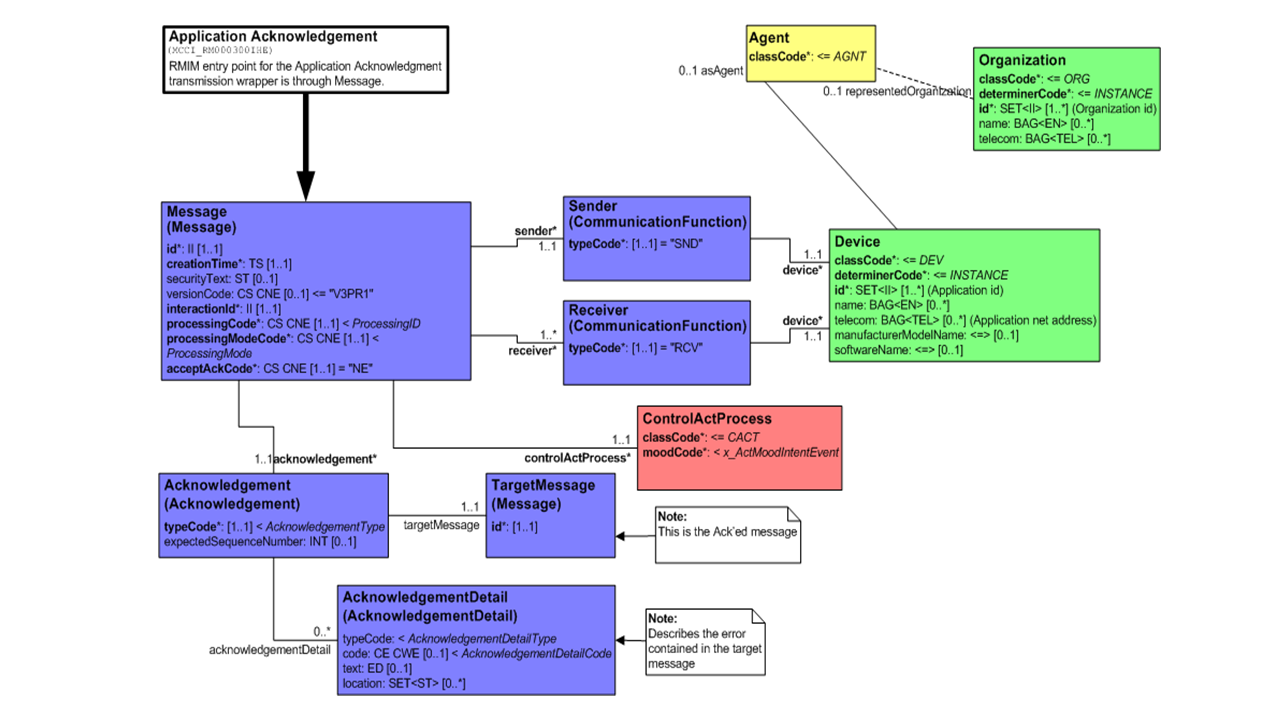
Figure O.1.3-1: Message Information Model
The attributes of this model are described in the following table:
Table O.1.3-1: Model Attributes
|
MCCI_HD000300IHE
|
This HMD extract defines the transmission wrapper used to send HL7 V3 Application Acknowledgement. Derived from Figure O.1.3-1 (MCCI_RM000300IHE) |
| Message | The transmission focal class. According of the XML ITS, the root XML element representing this class will be the HL7 interaction ID |
|
id [1..1] (M)
|
Unique message ID of the acknowledgment |
|
creationTime [1..1] (M)
|
Time stamp representing the time the message was created. Note that this is different from the time when the event which triggered the message occurred. |
|
versionCode [0..1]
|
The HL7 Version used in this message |
|
interactionId [1..1] (M)
|
The HL7 Interaction ID represented by this message |
|
processingCode [1..1] (M)
|
This attribute defines whether the message is part of a production, training, or debugging system. Valid values are D (Debugging), T (Testing), P (Production) |
|
processingModeCode [1..1] (M)
|
This attribute defines whether the message is being sent in current processing, archive mode, initial load mode, restore from archive mode, etc. Valid values are A (Archive), T (Current processing), I (Initial Load), R (Restore from archive) |
|
acceptAckCode [1..1] (M)
|
Acknowledgement Condition codes describe the conditions under which accept or application level acknowledgements are required to be returned in response to the message send operation. Fixed to NE (Never) as this is an acknowledgment itself. |
| Sender | The sender is the one which is acknowledging the receipt of a message |
|
typeCode [1..1] (M)
|
Structural attribute; this is a "Sender" communication function |
| Receiver | The receiver in the one which sent the message being acknowledged |
|
typeCode [1..1] (M)
|
Structural attribute; this is a "Receiver” communication function |
| Device | |
|
classCode [1..1] (M)
|
Structural attribute; this entity is a “Device” |
|
determinerCode [1..1] (M)
|
Structural attribute; this is a specific device |
|
id [1..*] (M)
|
The application ID(s). IHE restriction: id.root SHALL be an ISO OID, and id.extension SHALL NOT have a value. |
|
name [0..*]
|
Optional Sender or Receiver name |
|
telecom [0..*]
|
Optional network address of the application |
|
manufacturerModelName [0..1]
|
Optional application brand name |
|
softwareName [0..1]
|
Optional software name |
| Agent | This role links the application with the organization to which it belongs |
|
classCode [1..1] (M)
|
Structural attribute; this is the Agent role |
| Organization | The sender or receiver organization |
|
classCode [1..1] (M)
|
Structural attribute; this entity is an organization |
|
determinerCode [1..1] (M)
|
Structural attribute; this is a specific organization |
|
id [1..*] (M)
|
The organization ID(s). IHE restriction: id.root SHALL be an ISO OID, and id.extension SHALL NOT have a value. |
|
name [0..*]
|
Optional organization name |
|
telecom [0..*]
|
Optional telecommunications address |
| Acknowledgement | |
|
typeCode [1..1] (M)
|
The acknowledgement type. Since this is an Accept Acknowledgement, the possible values are CA (Accept Acknowledgement Commit Accept), CE (Accept Acknowledgement Commit Error), or CR (Accept Acknowledgement Commit Reject). |
|
expectedSequenceNumber [0..1]
|
|
| TargetMessage | The message being acknowledged |
|
id [1..1] (M)
|
Unique message ID of the message being acknowledged |
| AcknowledgementDetail | Describes the error(s) contained in the target message |
|
typeCode [0..1]
|
Optional detail type indicating if the problem was an error (E), a warning (W), or informational (I). |
|
code [0..1]
|
An optional coded value, representing the acknowledgement detail being transmitted. |
|
text [0..1]
|
Optional description of the acknowledgement detail being transmitted |
|
location [0..*]
|
The location within the message where the problem occurred. It is recommended that this is represented via an XPath expression. |
| ControlActProcess | The transmission content sent as part of the application acknowledgement. |
O.2 HL7 V3 Transmission Content
The HL7 Transmission Content is comprised of 2 parts:
- A "Trigger Event Control Act" (required for all messages except accept-level acknowledgements, for which it is not permitted)
- The "HL7 Domain Content" specified by an HL7 domain specific technical committee (required for each Trigger Event Control Act)
The "Trigger Event Control Act" contains administrative information related to the "controlled act" which is being communicated as a messaging interaction. It is also the part of HL7 messages that can convey status or commands for logical operations being coordinated between healthcare applications, e.g., the coordination of query specification/query response interactions and registry act interactions.
Note: The Trigger Event Control Act loosely equates to the EVN segment in HL7 v2.5.
The "HL7 Domain Content" is the primary domain content of the messaging interaction (when it is present). It contains domain specific content that is specified by an HL7 technical committee to satisfy a use case driven requirement for an HL7 messaging interaction. If an interaction contains HL7 Domain Content, then it also contains a Trigger Event Control Act.
For the Refined Message Information Models, Hierarchical Message Definitions and Message Type Table Views, refer to the HL7 V3 2008 Edition CD at: Edition2008/domains/uvai/uvai_TriggerEventControlAct.htm and Edition2008/domains/uvmi/uvmi_MasterFile-Registry.htm
O.2.1 Master File/Registry Event Notification Control Act (Role Subject) Information Model (MFMI_MT700701IHE)
Below is the Message Information Model for this control act wrapper. The purpose of the model is to describe the data elements relevant for use with IHE transactions based on HL7 V3 messages. It is a strict subset of the Master File / Registry Event Notification (MFMI_RM700700UV01) RMIM, which can be found on the HL7 V3 2008 Edition CD at: Edition2008/domains/uvmi/editable/MFMI_RM700700UV.htm
The following restrictions were made on the original RMIM to arrive at the restricted model:
- The following optional class attributes have been omitted:
- ControlActProcess.text
- ControlActProcess.priorityCode
- ControlActProcess.reasonCode
- All participations related to the ControlActProcess have been omitted
- The following act relationships to the RegistrationEvent have been omitted:
- inFulfillmentOf
- definition
- subject2
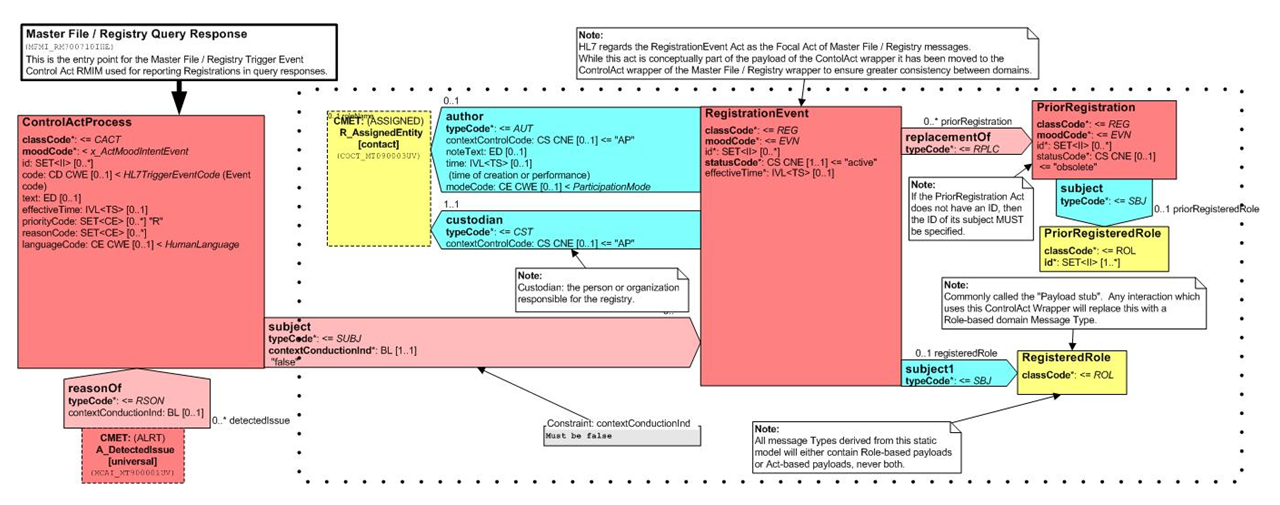
Figure O.2.1-1: Message Information Model
The attributes of this model are described in the following table.
Table O.2.1-1: Model Attributes
|
MFMI_HD700701IHE
|
This HMD extract defines the control act wrapper used to send HL7 V3 master file or registry messages with the subject being a role. Derived from Figure O.2.1-1 (MFMI_RM700701IHE) |
| Control Act Process | The entry point from the transmission wrapper |
|
classCode [1..1] (M)
|
Structural attribute; this is a Control Act |
|
moodCode [1..1] (M)
|
Structural attribute; possible values are INT (intent), RQO (request), EVN (event, occurrence), PRP (proposal), RMD (recommendation), APT (appointment), ARQ (appointment request), or PRMS (promise). |
|
id [0..*]
|
Optional Control Act ID |
|
code [0..1]
|
The HL7 Trigger Event code |
|
effectiveTime [0..1]
|
Optional time stamp or time interval indication when the ControlActProcess took place |
|
languageCode [0..1]
|
Optional language code |
| reasonOf | Act relationship linking the ControlActProcess to a detected issue |
|
typeCode [1..1] (M) ActRelationship (CS) {CNE:V:ActRelationshipReason, root= "RSON"} |
Structural attribute; this act relationship is “ReasonOf” |
|
contextConductionInd [0..1] ActRelationship (BL) |
The context conduction Indicator value in this control act wrapper |
| detectedIssueEvent [1..1] (A_DetectedIssueDeprecated) | The detected issue related to this event |
| subject | Act relationship linking the ControlActProcess to the Registration event |
|
typeCode [1..1] (M)
|
Structural attribute; this act relationship is “Subject” |
|
contextConductionInd [1..1] (M)
|
The context conduction Indicator value in this control act wrapper SHALL be ‘false’ |
| Although this part of the model has been included in a specialization of the Trigger Event Control Act wrapper for reasons of consistency, it is conceptually part of the payload of a HL7 interaction. The Focal Act of all interactions that use this model is the RegistrationEvent act, not the subject Role. | |
|
classCode [1..1] (M)
|
Structural attribute; this act is a registration |
|
moodCode [1..1] (M)
|
Structural attribute; this is an occurrence of the act |
|
id [0..*]
|
Optional registration event identifier(s). |
|
statusCode [1..1] (M)
|
The status of the registration event. The default is “active”. |
|
effectiveTime [0..1]
|
Optional time stamp or interval indicating when the registration event took place. IHE constraint: it this attribute is valued, the author.time SHALL be valued with the same time expression. |
| subject | The participation linking the Registration Event to the payload focal role (usually Patient). |
|
typeCode [1..1] (M)
|
Structural attribute; this is a "subject" participation |
| RegisteredRole | The payload stub. Replaced by a role-based payload from the domain content |
| author | This participation represents the entity which authored the registration. The Assigned Entity SHOULD be a person, MAY be a device or an organization, and SHALL NOT be a non-person living subject. |
|
typeCode [1..1] (M)
|
Structural attribute; this participation is of type “Author” |
|
contextControlCode [0..1]
|
Optional contextControlCode, the default is “AP” |
|
time [0..1]
|
Time of creation or performance. IHE constraint: If this attribute is valued, the RegistrationEvent.effectiveTime SHALL be valued with the same time expression |
|
modeCode [0..1]
|
This is the optional participation mode |
| custodian | The application or organization responsible for the patient identity source. This participation is required. IHE restriction: the assigned entity SHALL be either an organization or a device. |
|
typeCode [1..1] (M)
|
Structural attribute; this participation id of type “Custodian” |
|
contextControlCode [0..1]
|
Optional contextControlCode, the default is “AP” |
| ReplacementOf | The relationship between the current Registration Event and other registration events which are being replaced by the current one. |
|
typeCode [1..1] (M)
|
Structural attribute; this is a “Replace” relationship |
| PriorRegistration | The previous registration event, which is being replaced by the current one. An example is the Resolve Duplicates message, where the prior registration contains the subject role with the identifiers which have been merged into the role of the current registration event. |
|
classCode [1..1] (M)
|
Structural attribute; this act is a registration |
|
moodCode [1..1] (M)
|
Structural attribute; this is an occurrence of the act |
|
id [0..*]
|
Optional prior registration event identifier(s). |
|
statusCode [1..1] (M)
|
The status of the registration event. The default is “obsolete”. |
| PriorRegisteredRole | The role subject of the prior registration. |
|
classCode [1..1] (M)
|
Structural attribute; this class is a role |
|
id [1..*] (M)
|
Identifiers of the role subject of the prior registration. Usually contains the merged ID of a patient after duplicate resolution. |
O.2.2 Master File/Registry Query Response Control Act (Role Subject) Information Model (MFMI_MT700711IHE)
Below is the Message Information Model for this control act wrapper. The purpose of the model is to describe the data elements relevant for use with IHE transactions based on HL7 V3 messages. It is a strict subset of the Master File / Registry Query Response (MFMI_RM700710UV01) RMIM, which can be found on the HL7 V3 2008 Edition CD at: Edition2008/domains/uvmi/editable/MFMI_RM700710UV.htm. The following restrictions were made on the original RMIM to arrive at the restricted model:
- The following optional class attributes have been omitted:
- ControlActProcess.text
- ControlActProcess.priorityCode
- ControlActProcess.reasonCode
- All participations related to the ControlActProcess have been omitted
- The reasonOf act relationship has been omitted
- The following act relationships to the RegistrationEvent have been omitted:
- inFulfillmentOf
- definition
- subject2
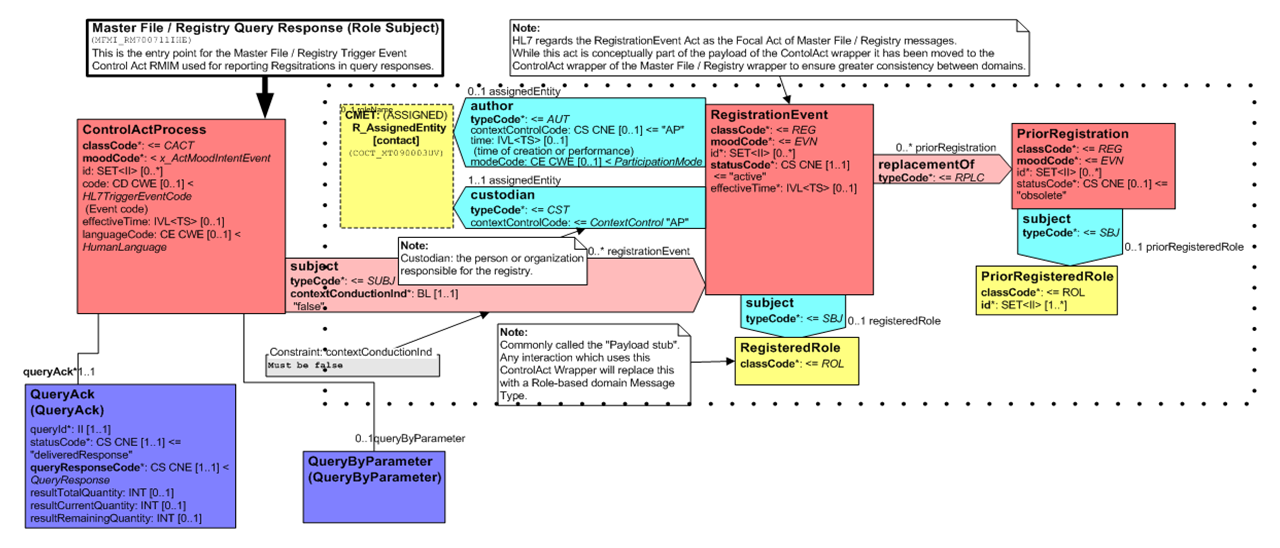
Figure O.2.2-1: Message Information Model
The attributes of this model are described in the following table.
Table O.2.2-1: Model Attributes
|
MFMI_HD700711IHE
|
This HMD extract defines the control act wrapper used to send HL7 V3 master file or registry query responses with the subject being a role. Derived from Figure O.2.2-1 (MFMI_RM700711IHE) |
| Control Act Process | The entry point from the transmission wrapper |
|
classCode [1..1] (M)
|
Structural attribute; this is a Control Act |
|
moodCode [1..1] (M)
|
Structural attribute; possible values are INT (intent), RQO (request), EVN (event, occurrence), PRP (proposal), RMD (recommendation), APT (appointment), ARQ (appointment request), or PRMS (promise). |
|
id [0..*]
|
Optional Control Act ID |
|
code [0..1]
|
The HL7 Trigger Event code |
|
effectiveTime [0..1]
|
Optional time stamp or time interval indication when the ControlActProcess took place |
|
languageCode [0..1]
|
Optional language code |
| subject | Act relationship linking the ControlActProcess to the Registration event. Note that in the event of a query for which there are no results, the ControlActProcess will still be returned, but no RegistrationEvent will be present. |
|
typeCode [1..1] (M)
|
Structural attribute; this act relationship is “Subject” |
|
contextConductionInd [1..1] (M)
|
The context conduction Indicator value in this control act wrapper SHALL be ‘false’ |
| RegistrationEvent | Although this part of the model has been included in a specialization of the Trigger Event Control Act wrapper for reasons of consistency, it is conceptually part of the payload of a HL7 interaction. The Focal Act of all interactions that use this model is the RegistrationEvent act, not the subject Role. In cases where a query response has no records to return, there will be no RegistrationEvent being returned. |
|
classCode [1..1] (M)
|
Structural attribute; this act is a registration |
|
moodCode [1..1] (M)
|
Structural attribute; this is an occurrence of the act |
|
id [0..*]
|
Optional registration event identifier(s). |
|
statusCode [1..1] (M)
|
The status of the registration event. The default is “active”. |
|
effectiveTime [0..1]
|
Optional time stamp or interval indicating when the registration event took place. IHE constraint: it this attribute is valued, the author.time SHALL be valued with the same time expression. |
| subject | The participation linking the Registration Event to the payload focal role (usually Patient). |
|
typeCode [1..1] (M)
|
Structural attribute; this is a "subject" participation |
| RegisteredRole | The payload stub. Replaced by a role-based payload from the domain content |
| author | This participation represents the entity which authored the registration. The Assigned Entity SHOULD be a person, MAY be a device or an organization, and SHALL NOT be a non-person living subject. |
|
typeCode [1..1] (M)
|
Structural attribute; this participation is of type “Author” |
|
contextControlCode [0..1]
|
Optional contextControlCode, the default is “AP” |
|
time [0..1]
|
Time of creation or performance. IHE constraint: If this attribute is valued, the RegistrationEvent.effectiveTime SHALL be valued with the same time expression |
|
modeCode [0..1]
|
This is the optional participation mode |
| custodian | The application or organization responsible for the patient identity source. This participation is required. IHE restriction: the assigned entity SHALL be either an organization or a device. |
|
typeCode [1..1] (M)
|
Structural attribute; this participation id of type “Custodian” |
|
contextControlCode [0..1]
|
Optional contextControlCode, the default is “AP” |
| ReplacementOf | The relationship between the current Registration Event and other registration events which are being replaced by the current one. |
|
typeCode [1..1] (M)
|
Structural attribute; this is a “Replace” relationship |
| PriorRegistration | The previous registration event, which is being replaced by the current one. An example is the Resolve Duplicates message, where the prior registration contains the subject role with the identifiers which have been merged into the role of the current registration event. |
|
classCode [1..1] (M)
|
Structural attribute; this act is a registration |
|
moodCode [1..1] (M)
|
Structural attribute; this is an occurrence of the act |
|
id [0..*]
|
Optional prior registration event identifier(s). |
|
statusCode [1..1] (M)
|
The status of the registration event. The default is “obsolete”. |
| PriorRegisteredRole | The role subject of the prior registration. |
|
classCode [1..1] (M)
|
Structural attribute; this class is a role |
|
id [1..*] (M)
|
Identifiers of the role subject of the prior registration. Usually contains the merged ID of a patient after duplicate resolution. |
| QueryAck | Information about the query to which this message is a response |
|
queryId [1..1] (R)
|
The query ID to which this message is a response. |
|
statusCode [1..1] (R)
|
The status of the query event. The default is “deliveredResponse”. Possible values are "aborted", "executing", "new", "waitContinuedQueryResponse" |
|
queryResponseCode [1..1] (M)
|
Code representing the content of the response. Possible values are AE (application error), OK (data found), NF (no data found), QE (query parameter error). |
|
resultTotalQuantity [0..1]
|
Total number of results found. |
|
resultCurrentQuantity [0..1]
|
The number of results in this message. |
|
resultRemainingQuantity [0..1]
|
The number of results not transmitted yet. |
| queryByParameter | The stub to an optional copy of the Query By Parameter payload of the original query. |
O.2.3 Query Control Act Request: Query By Parameter Information Model (QUQI_MT021001IHE)
Below is the Message Information Model for this control act wrapper. The purpose of the model is to describe the data elements relevant for use with IHE transactions based on HL7 V3 messages. It is a strict subset of the Query Specification Control Act: Query By Parameter (QUQI_RM021000UV01) RMIM, which can be found on the HL7 V3 2008 Edition CD at: Edition2008/domains/uvqi/editable/QUQI_RM021000UV.htm. The following restrictions were made on the original RMIM to arrive at the restricted model:
- The following optional class attributes have been omitted:
- ControlActProcess.text
- ControlActProcess.priorityCode
- ControlActProcess.reasonCode
- The following participations related to the ControlActProcess have been omitted:
- overseer
- dataEnterer
- informationRecipient
- The reasonOf act relationship has been omitted
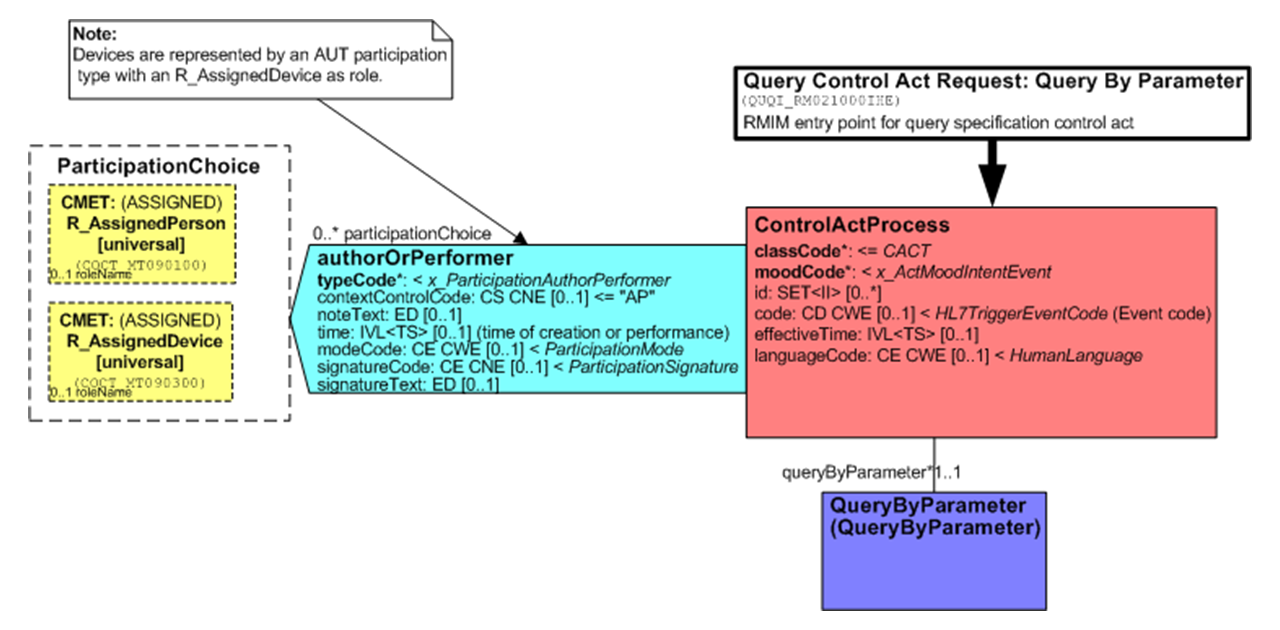
Figure O.2.3-1: Message Information Model
The attributes of this model are described in the following table.
Table O.2.3-1: Model Attributes
|
QUQI_HD021000IHE
|
This HMD extract defines the control act wrapper used to send HL7 V3 query by parameter messages. Derived from Figure O.2.3-1 (QUQI_RM021000IHE) |
| Control Act Process | The entry point from the transmission wrapper |
|
classCode [1..1] (M)
|
Structural attribute; this is a Control Act |
|
moodCode [1..1] (M)
|
Structural attribute; possible values are INT (intent), RQO (request), EVN (event, occurrence), PRP (proposal), RMD (recommendation), APT (appointment), ARQ (appointment request), or PRMS (promise). |
|
id [0..*]
|
Optional Control Act ID |
|
code [0..1]
|
The HL7 Trigger Event code |
|
effectiveTime [0..1]
|
Optional time stamp or time interval indication when the ControlActProcess took place |
|
languageCode [0..1]
|
Optional language code |
| authorOrPerformer | This optional participation represents the entity which made the query. The author of the query SHOULD be a person, or it MAY be a device. |
|
typeCode [1..1] (M)
|
Structural attribute; this participation is of type "AUT" or “PRF” |
|
contextControlCode [0..1]
|
Optional contextControlCode, the default is “AP” |
|
time [0..1]
|
Time of creation or performance. |
|
modeCode [0..1]
|
This is the optional participation mode |
| queryByParameter | The stub to the Query By Parameter payload. |
O.2.4 Query Control Act Request Continue/Cancel Information Model (QUQI_MT000001IHE)
Below is the Message Information Model for this control act wrapper. The purpose of the model is to describe the data elements relevant for use with IHE transactions based on HL7 V3 messages. It is a strict subset of the Query Continuation/Cancel Control Act (QUQI_RM000001UV01) RMIM, which can be found on the HL7 V3 2008 Edition CD at: Edition2008/domains/uvqi/editable/QUQI_RM000001UV.htm
The following restrictions were made on the original RMIM to arrive at the restricted model:
- The following optional class attributes have been omitted:
- ControlActProcess.text
- ControlActProcess.priorityCode
- ControlActProcess.reasonCode
- All participations related to the ControlActProcess have been omitted
- The reasonOf act relationship has been omitted
- ControlActProcess.moodCode is fixed to EVN
- QueryContinuation.queryId is Mandatory
- QueryContinuation.statusCode is defaulted to "waitContinuedQueryResponse"
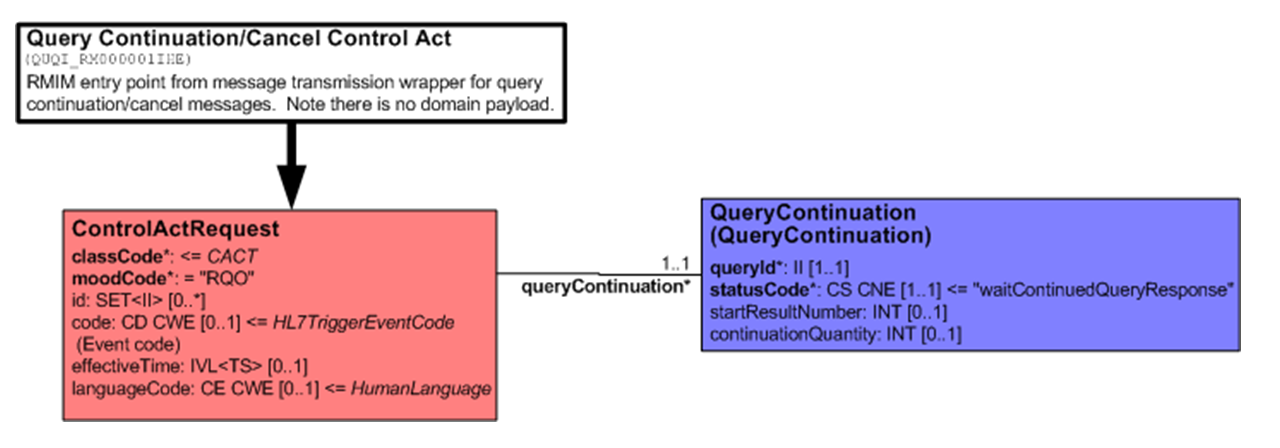
Figure O.2.4-1: Message Information Model
The attributes of this model are described in the following table.
Table O.2.4-1: Model Attributes
|
QUQI_HD000001IHE
|
This HMD extract defines the control act of the query continuation request. Note that there is no payload. Derived from Figure O.2.4-1 (QUQI_RM021000IHE) |
| Control Act Process | The entry point from the transmission wrapper |
|
classCode [1..1] (M)
|
Structural attribute; this is a Control Act |
|
moodCode [1..1] (M)
|
This is a request |
|
id [0..*]
|
Optional Control Act ID |
|
code [0..1]
|
The HL7 Trigger Event code |
|
effectiveTime [0..1]
|
Optional time stamp or time interval indication when the ControlActProcess took place |
|
languageCode [0..1]
|
Optional language code |
| QueryContinuation | The information about the query, which is being continued |
|
queryId [1..1](M)
|
The query identifier, which links this continuation request with the original query. |
|
statusCode [1..1] (M)
|
The query status. The only other possible value is "aborted", indicating that no more results are needed from the query fulfiller. |
|
startResultNumber [0..1]
|
Optionally, the query placer may request that the list of responses starts from a particular unit (based on the total number of responses returned by the query fulfiller to the original query) |
|
continuationQuantity [0..1]
|
Optionally, the query placer may specify the maximum number of responses to be returned by the query fulfiller. If 0 is specified, this is an indication that the query is cancelled. If this attributed is not valued, the query fulfiller shall use the quantity specified in the most recent query or continuation request. |
O.3 IHE Transactions and Corresponding Transmission and Control Act Wrappers
The following table lists the wrappers for the currently defined IHE transactions, which use HL7 V3 messages.
Table O.3-1: IHE Transactions and Corresponding Transmission and Control Act Wrappers
| Transaction Reference | Transmission Wrapper | Control Act Wrapper |
| 3.44.4 – Patient Add or Revise | MCCI_MT000100UV01 | MFMI_MT700701UV01 |
| 3.44.4 – Resolve Duplicates | MCCI_MT000100UV01 | MFMI_MT700701UV01 |
| 3.44.4 – Acknowledgement | MCCI_MT000200UV01 | None |
| 3.45.4 – Get Corresponding Identifiers | MCCI_MT000100UV01 | QUQI_MT021001UV01 |
| 3.45.4 – Get Corresponding Indenters Response | MCCI_MT000300UV01 | MFMI_MT700711UV01 |
| 3.46.4 – Revise Demographic Data | MCCI_MT000100UV01 | MFMI_MT700701UV01 |
| 3.46.4 – Acknowledgement | MCCI_MT000200UV01 | None |
| 3.47.4 – Find Candidates Query | MCCI_MT000100UV01 | QUQI_MT021001UV01 |
| 3.47.4 – Find Candidates Response | MCCI_MT000300UV01 | MFMI_MT700711UV01 |
| 3.47.4 – Query Continuation | MCCI_MT000300UV01 | QUQI_MT000001UV01 |
| 3.47.4 – Acknowledgement | MCCI_MT000200UV01 | None |
